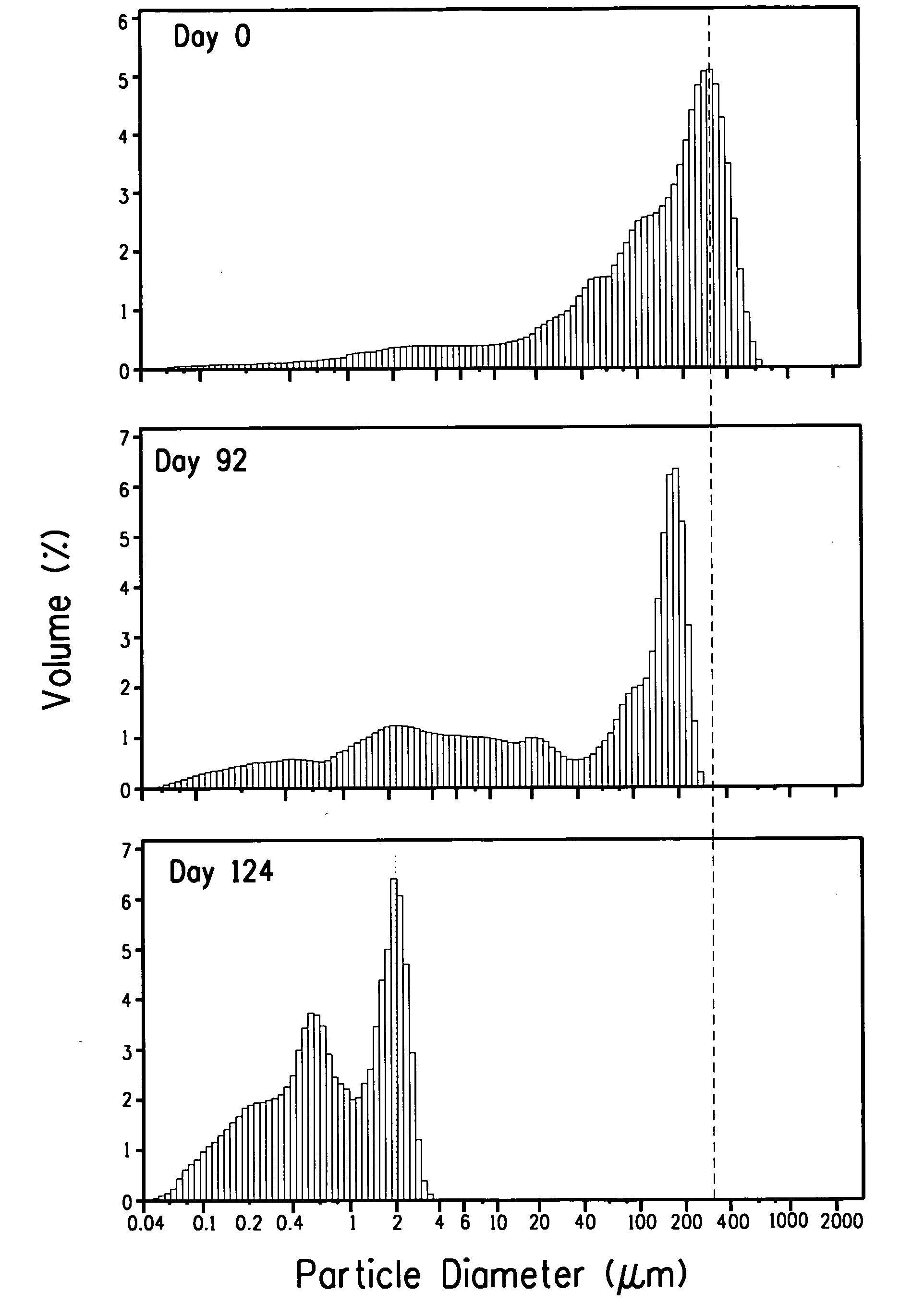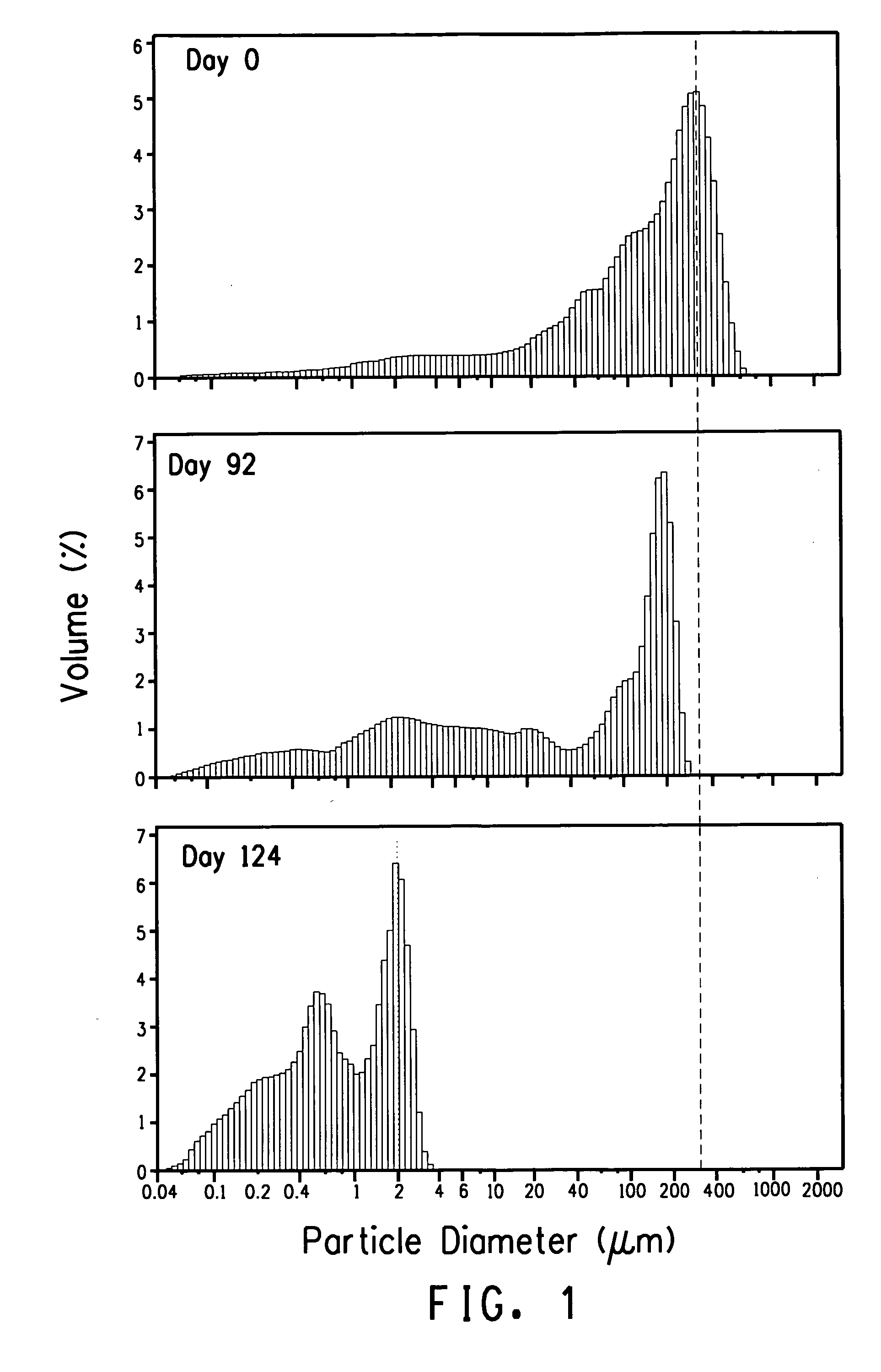Method to enhance biodegradation of sulfonated aliphatic-aromatic co-polyesters by addition of a microbial consortium
a technology of aliphatic polyester and microbial consortium, applied in the micro field, can solve the problems of non-biodegradability, unacceptably slow biodegradation rate, and inability to hydrolyze polymers,
- Summary
- Abstract
- Description
- Claims
- Application Information
AI Technical Summary
Benefits of technology
Problems solved by technology
Method used
Image
Examples
example 1
Fed-Batch Bioreactors for Biodegradation of an Aliphatic-Aromatic Co-Polyester
[0157] Example 1 demonstrates enrichment, cultivation and maintenance of a bacterial consortium that degrades an aliphatic-aromatic copolyester in a fed-batch bioreactor. Two fed-batch bioreactors were used to enrich for bacteria that degrade the aliphatic-aromatic polyester. The first bioreactor was inoculated with compost. Biomass from the first bioreactor was then used to inoculate the second bioreactor. Analysis of the particle size distribution of the powdered aliphatic-aromatic polyester (Polymer B) indicated that the aliphatic-aromatic polyester underwent biodegradation.
[0158] The fed-batch bioreactors were composed of a 1-L dished bottom reactor (Applikon Part# Z61101C004) and controller units. A stirrer unit and controller (Applikon Part # Z5100002M0 and Controller ADI 1032 P100, part # Z510320010) were used to control mixing in the bioreactors. The stirrer had marine impellors at the bottom (Ap...
example 2
Characterization of the Bacterial Consortium in a Fed-Batch Bioreactor for Degradation of a Sulfonated Aliphatic-Aromatic Co-Polyester
[0165] Example 2 demonstrates the types of bacteria that are contained in a bacterial consortium that was maintained in a fed-batch bioreactor that was supplemented with sulfonated aliphatic-aromatic co-polyester (Polymer B). Every bacterial species has a unique 16S rRNA gene sequence. Therefore, the various types of bacteria in the fed-batch bioreactor could be identified by sequencing the products that result from using the polymerase chain reaction (PCR) to copy and amplify the different 16S rRNA genes that had been extracted from the microbial population contained in the fed-batch bioreactor. The bacterial consortium from BF4 has been deposited with ATCC and has been designated as ATCC PTA-6129.
[0166] DNA was extracted from Bioreactor BF4 biomass using a commercial kit (UltraClean Microbial Genomic DNA Isolation Kit, Mo Bio Labs, Carlsbad, Calif...
PUM
| Property | Measurement | Unit |
|---|---|---|
| Electrical conductance | aaaaa | aaaaa |
| Percent by mole | aaaaa | aaaaa |
| Percent by mole | aaaaa | aaaaa |
Abstract
Description
Claims
Application Information
 Login to View More
Login to View More - R&D
- Intellectual Property
- Life Sciences
- Materials
- Tech Scout
- Unparalleled Data Quality
- Higher Quality Content
- 60% Fewer Hallucinations
Browse by: Latest US Patents, China's latest patents, Technical Efficacy Thesaurus, Application Domain, Technology Topic, Popular Technical Reports.
© 2025 PatSnap. All rights reserved.Legal|Privacy policy|Modern Slavery Act Transparency Statement|Sitemap|About US| Contact US: help@patsnap.com


